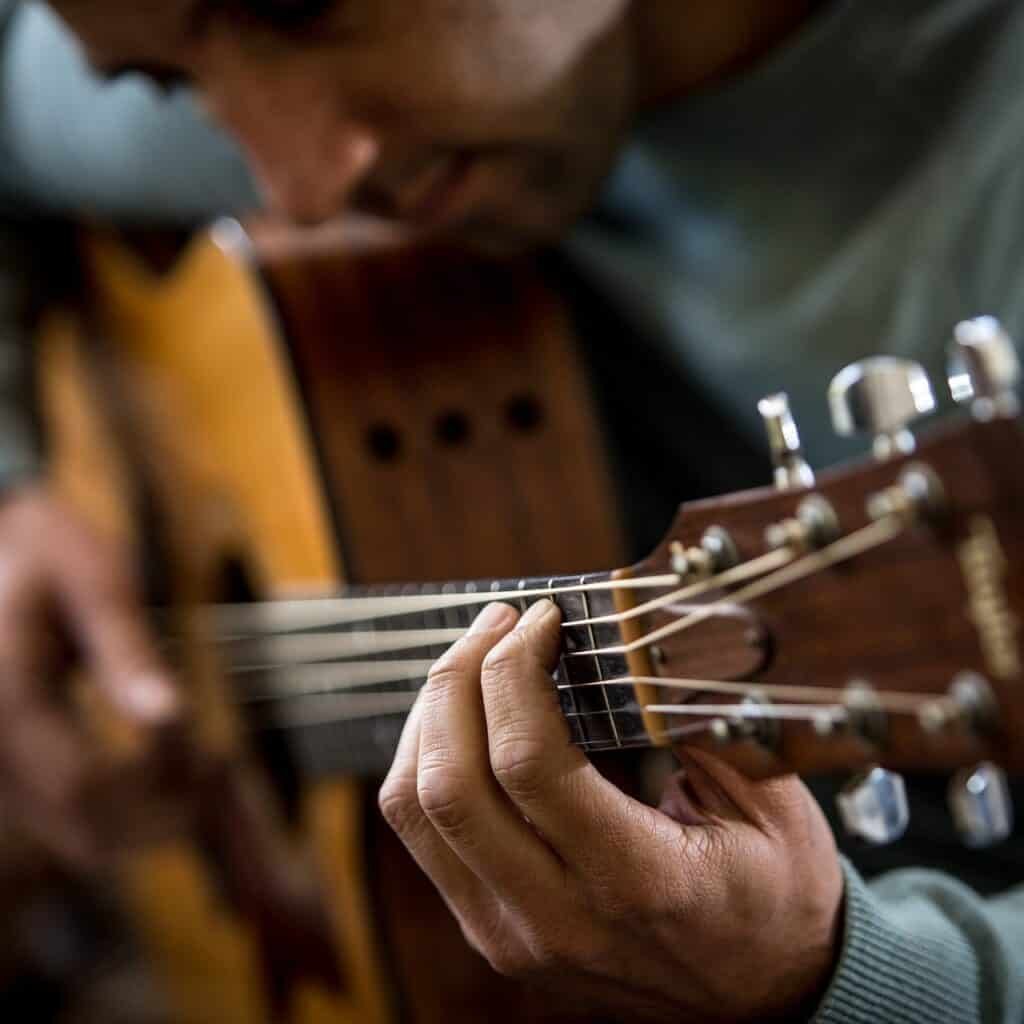Whether you’re a sound engineer, a producer or a musician, recording a guitar is something you’ll probably have to do in your career. Or maybe that you already did, but the result wasn’t what you expected. Which microphone should I choose ? What’s the best position ? All these question are important. If you’re reading this article, it’s probably because you want to do things right, which is a good thing!

1. Microphone choice
The microphone choice is first thing to think about when you record an instrument. But let’s stay realistic, if you’re reading this article, you probably don’t have tons of microphone in your studio, which is totally normal!
There are actually two choices to do if you want to, at least, start well. The first one is to go for a condenser microphone. A large diaphragm such as an AKG 414 (more aggressive) or a Neumann U87 will be an amazing choice to pick up the entire spectrum, while a small diaphragm such as a Neumann KM 184 or a Sennheiser MKH 40 will be more efficient to pick up the nice high-mid frequencies a guitar can have.
If you have one in your mics artillery, you can go for a ribbon microphone such as a Royer Labs R-121. The result will be more “vintage” and more aggressive but still very efficient depending on the genre you work in.
Whatever you choose as microphone, we advise not to use a dynamic one such as an SM57 (even if it’s one of the most versatile microphone you’ll find on the market), because you’ll need to go closer and closer and there will be a big risk of having a proximity effect, which is often extremely unpleasant.
The position you’ll choose is the second important thing. Let’s have a look at this next picture…

Position A is the worst position you can choose. Whatever the situation, don’t place the microphone in front of the sound hole. All the details will be lost and the result will be muddy and bassy. It look intuitive, but it’s not efficient at all.
Position B is the most “basic” one. What you’ll get as result is a nice balanced sound that will capture high-end and fret sounds. If you don’t want to take too much risk, you can go for that position.
Position C is what we generally use at IDeez Production, because it captures a little more bass without losing all the details in the high range. It will sound more “fully” and more powerful.
3. Distance
The distance you’ll choose depends on what you expect from your recording. But in all cases, try to stay from 10 to 16 inches away from the guitar.
Keep that in mind:
- Closer = More bass, more details and less room sound
- Further = Less bass, less details and more room sound
4. Try!
The techniques we’re talking about in this article weren’t born from nowhere. It came from engineers who tried again, and again, and again,…
So, why not you? Whatever the field, the best experience comes from what you try and, eventually, the mistakes you do. But who cares ? You’ll learn from mistakes, much more than you think!
Somebody once said: “An idea is ridiculous until it becomes a success”. Think about it!
5. Bonus
When you master your guitar recordings with one mic. You can try to add a stereo pair to give more air to your recording. We’ll keep 2 techniques in mind:
A) XY pair

This is the most common technique when it comes to guitar recording. Place it roughly 1 meter away from the guitar. This will add what a mono recording can’t provide you: Space and air.
But this is not the only one…
B) Large diaphragm pair
This technique has the big advantage to create a natural stereo picture. But how to process ?
Place the two large diaphragm microphones 1,50 meter away from each other. Then place them 1 meter away from the guitar.
This pair is actually a room recording without really being one, because by using this technique, what you want is also to capture the nice high frequencies a guitar can provide. So don’t go too far away!
The first guitar recoding(s) you’ll make probably won’t be the best of your life. But that’s not a problem! It’s only by trying that you’ll be better than your neighbor who makes “good” recording everyday for years and years.
Don’t forget that recording some music is all about enjoying the process, so…
HAVE FUN!






